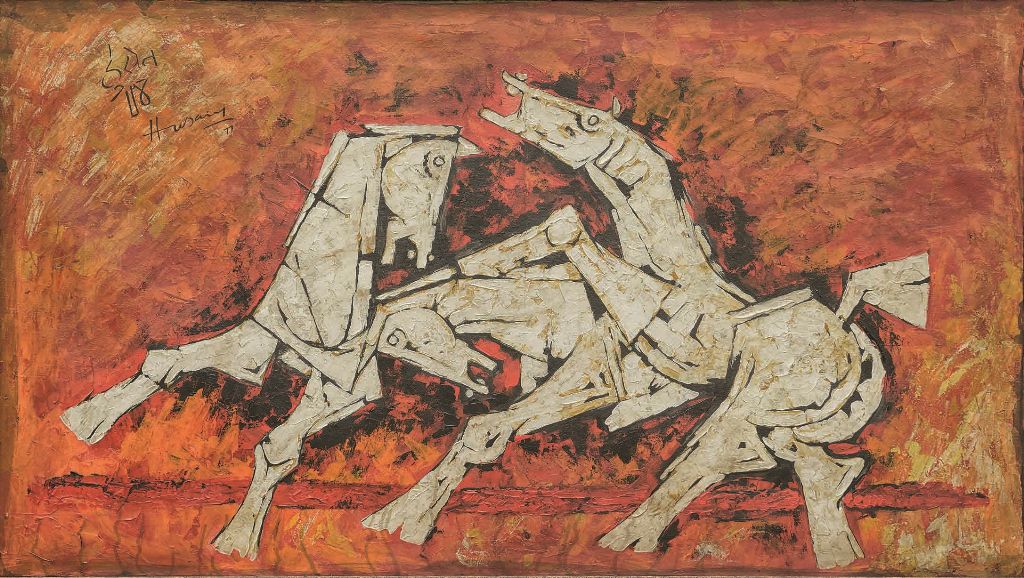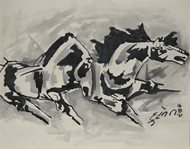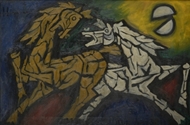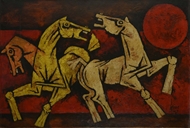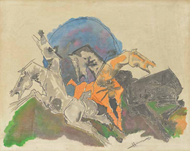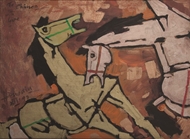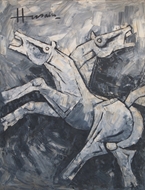![]() Significant Indian Art
Significant Indian Art
![]() Significant Indian Art
MAQBOOL FIDA HUSAIN (1915 - 2011)
Significant Indian Art
MAQBOOL FIDA HUSAIN (1915 - 2011)
RELATED LOTS
CONTACT US
Catalogue & Viewing
Lot Closed
Accounts & Shipping
Lot Closed
-
Provenance
 Provenance
Provenance
Given to Mohamed Ali Baig by Husain himself in 1977 and subsequently acquired by the current owner's father and thence by descent
-
Literature
 Literature
Literature

This painting from 1977 titled ‘Horses’ and personally given by him to Mohamed Ali Baig along with a unique handwritten letter wherein he has himself passionately mentioned ‘‘this piece of art is dedicated to the art itself’’ exemplifies the best of Husain’s attributes during that particular period of time. The vagrant artist had travelled to the eastern shores of China and the western shores of Europe, culminating within himself a climax of visual concepts and ideals. Acrylics was a new and much desired medium of painting, especially so for an artist like Husain, as it offered more freedom and fluidity, complimenting the fast pace of his working capacity. Colours were applied in layers with a palette knife, building the forms in gradual structured layers that created an intricate weave of colours and textures. Husain initially drew out the forms in thick brush strokes of black colour, filling in the outer areas with dense black. On this he then began to paint the middle tones, gradually moving towards the lighter shades and finally arrived at the contoured highlights.
The colours portray a translucence that allows layers to be visible one after the other. The palette with its bright hues evokes the essence of Jain and Basholi miniatures. The three prancing horses appear against a fiery backdrop of flames that engulfs them in their act of joy de vivre. Husain alludes to the fierce presence of the sun in his choice of colour and style of application, but resisted himself from directly showing its form, unlike the paintings of preceding years. In the letter dedicating this work to ‘the art itself’ – Husain has defined the temperament and emotion of strokes to be “as fresh as the raindrops”.
